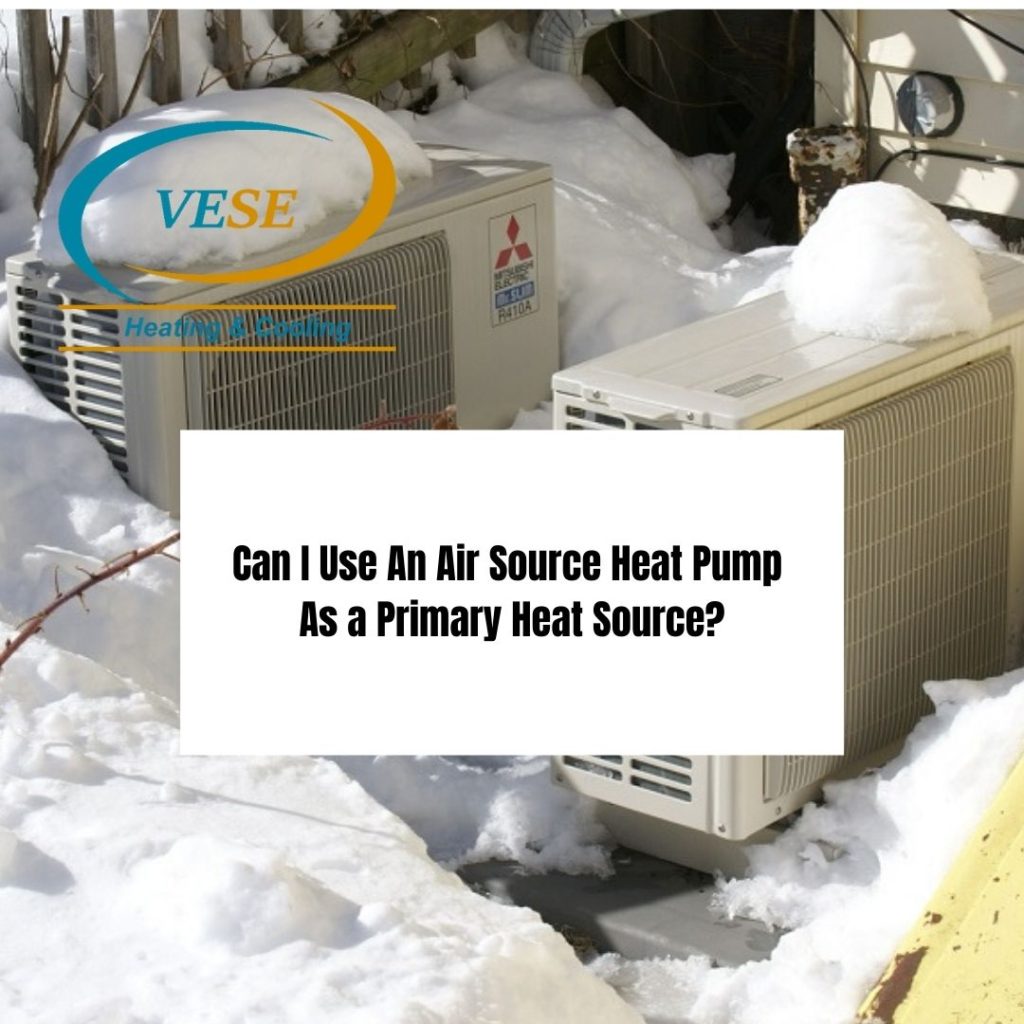Can I Use An Air Source Heat Pump As a Primary Heat Source? The most well-known type of heat pump is an air-source heat pump. Air source heat pumps are very popular in Canada. It’s easy to see why: they’re relatively cheap to install, they provide immediate savings on home heating bills, and they combine heating and cooling into a single system.
However, there is one significant disadvantage of an air source heat pump: it requires backup heat in the winter. Most homeowners are unaware of this limitation or are unfamiliar with the science behind it. Let’s take a closer look at how and why air-source heat pumps require backup heat in cold climates. We’ll begin with an explanation of how air source heat pumps work.
Why Have Heat Pumps Become So Popular?
Heat pumps are getting better thanks to the many new improvements. Two-speed compressors, unlike normal compressors that can only work at full capacity, allow heat pumps to operate close to the heating or cooling capacity required at any given external temperature, conserving energy and lowering compressor wear. Zone control systems perform effectively with two-speed heat pumps. Automatic dampers are used in zone control systems, which are commonly found in larger homes, to allow the heat pump to keep different rooms at different temperatures.
Indoor fans (blowers), outdoor fans, or both are supplied with variable-speed or dual-speed motors in some heat pump types. These fans’ variable-speed settings try to keep the air circulating at a suitable speed, reducing cool breezes and increasing energy savings. It also reduces the amount of noise produced by the blower while it is running at full power.
Air Source Heat Pumps Have A Different Kind Of Compressor
The scroll compressor, which consists of two spiral-shaped scrolls, is another advancement in heat pump technology. One stays put while the other circles around it, compressing the refrigerant by forcing it into smaller and smaller spaces. Scroll compressors have a longer operational life and are quieter than traditional reciprocating compressors. When compared to existing heat pumps with piston compressors, heat pumps with scroll compressors deliver 5.6° to 8.3°C warmer air when in the heating mode, according to some sources.
Heat pumps can be equipped with a gas furnace to supplement the heat pump, which is sometimes referred to as a dual-fuel or hybrid system. Although most heat pumps use electric resistance heaters as a backup for cold weather, heat pumps can also be equipped with a gas furnace to supplement the heat pump, which is sometimes referred to as a dual-fuel or hybrid system. This helps to fix the problem of the heat pump running inefficiently at low temperatures while also lowering the amount of electricity used. Because few heat pump manufacturers combine both sources of heat in a single box, these setups are frequently two smaller, side-by-side conventional systems sharing the same ductwork.
This type of system can also be more cost-effective than a combustion fuel-fired furnace or a basic heat pump on its own. Actual energy savings are determined by the cost of natural gas versus electricity.
In Conclusion
There are several advantages to using an air source heat pump.
Air source heat pump condensers may regulate up to eight evaporators, ensuring that heat is distributed effectively throughout your home. Evaporators run silently, so you might not even notice they’re running if your home is at a suitable temperature.
Your air source heat pump will also provide cooling in the summer as a bonus. Part of the secret to the system’s efficiency is that it doesn’t rely on ducting. Because warmed (or cooled) air is created at the evaporator utilizing the system’s insulated refrigerant lines, an air source heat pump minimizes transmission losses.
In cold temperatures, air-source heat pumps have decreased efficiency and provide less heat. Air source heat pumps have to work harder when temperatures dip below zero, so they aren’t as cost-effective as forced air furnaces for instance. However, heat may be generated from air temperatures as low as -15 degrees Celsius using air source heat pumps, and it’s highly recommended to install additional electric resistance heaters as a backup for cold weather.
Vese Heating & Cooling is Edmonton company that is licensed, bonded, and insured. Our certified installers each have their own license, confirming that they have been professionally trained and certified to meet the highest standards, in Edmonton. Contact Vese Heating & Cooling we offer superior air source heat pumps installation and services to Edmonton customers.

